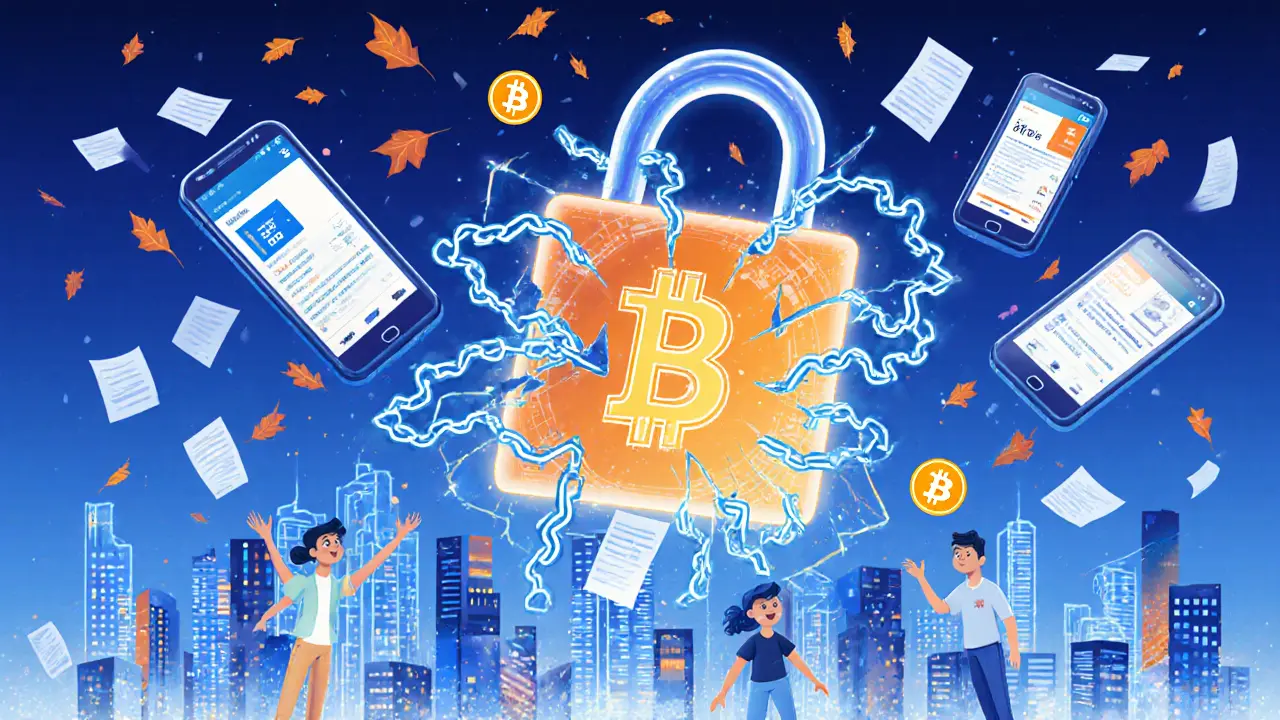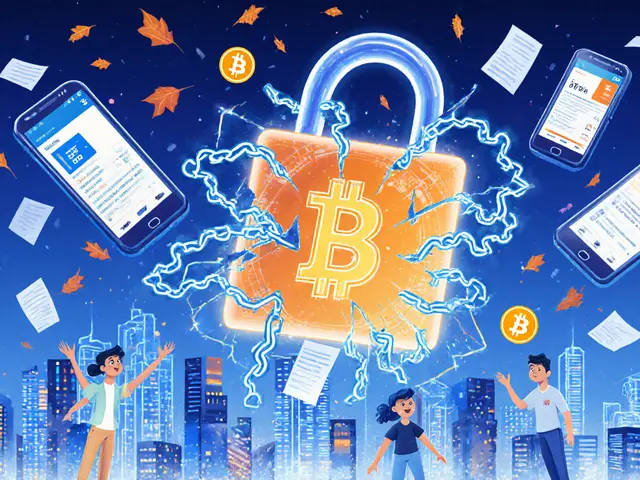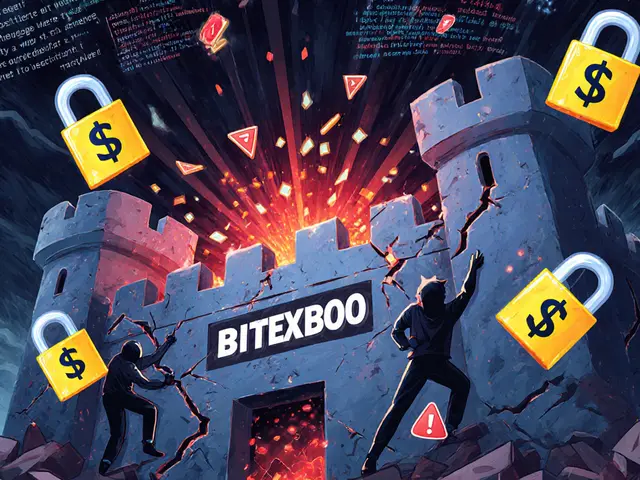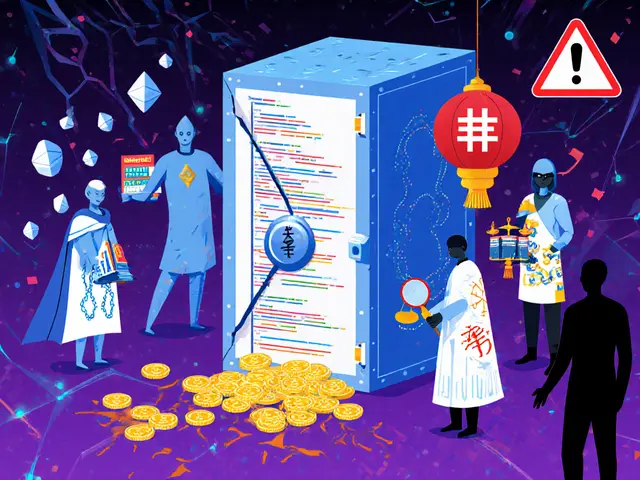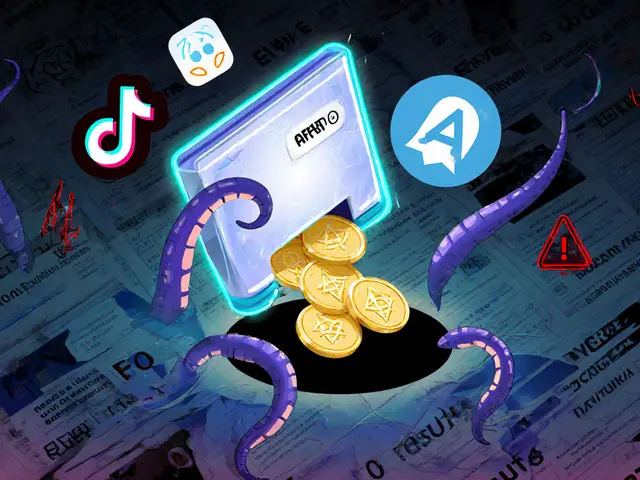Crypto Recovery Eligibility Calculator
Recovery Assessment
Results
Imagine waking up one day and finding $15,000 in crypto locked away-no warning, no explanation, just a message saying your account is frozen. That’s what happened to thousands of Filipinos in early 2025, when the Securities and Exchange Commission (SEC) froze $150 million in cryptocurrency assets tied to 20 unlicensed exchanges. This wasn’t a random glitch. It was the government’s biggest enforcement move yet in a market that had grown too fast, too wild.
Why Did the Philippines Freeze $150 Million in Crypto?
The Philippines had been a crypto hotspot for years. By early 2025, retail investors had poured ₱6 trillion (about $107 billion) into digital assets, according to AInvest.com. Most of it was driven by young, mobile-first users using apps like Coins.ph to send remittances, trade Bitcoin, or earn interest on stablecoins. But behind the scenes, dozens of platforms were operating without any official approval.
The SEC stepped in with two new rules in January 2025: SEC Memorandum Circular No. 4-2025 and No. 5-2025. These defined exactly what counted as a crypto-asset and who needed a license to handle them. Any platform offering trading, custody, or exchange services without registration became illegal overnight. The SEC didn’t give a grace period. They just published a list of 20 blacklisted exchanges-and froze everything on them.
The assets frozen weren’t random. About 68% were stablecoins like USDT and USDC, which are supposed to be worth $1 each but are often used to move money quickly and anonymously. Bitcoin made up 22%, and altcoins the rest. The funds were spread across Ethereum (45%), Binance Smart Chain (30%), and Tron (15%). These weren’t just small-time operations. Some were well-known names with Filipino users, like Bitget and Bybit, which had been quietly serving local customers without a license.
Who Got Hit the Hardest?
The freeze didn’t just target scammers. It hit everyday users too. Many people didn’t even know the platforms they used weren’t licensed. A survey by the Association of Cryptocurrency Enthusiasts of the Philippines (ACEP) found that 78% of users had no idea about the new licensing rules. They thought if an app worked, it was legal.
On Reddit, threads like “My $15k frozen in Bitget PH - What now?” blew up. Over 1,200 people upvoted it. Comments poured in: “I used this for my daughter’s tuition.” “I saved for two years to buy this Bitcoin.” “I didn’t know I was breaking the law.”
The Philippine Consumer Welfare Association received over 3,200 formal complaints between January and June 2025. The average loss per person? $4,670. That’s not pocket change-it’s rent, medical bills, school fees. Many users were older Filipinos who trusted apps because they looked professional. They didn’t understand blockchain. They just saw a 12% APY on USDC and thought, “This is safe.”
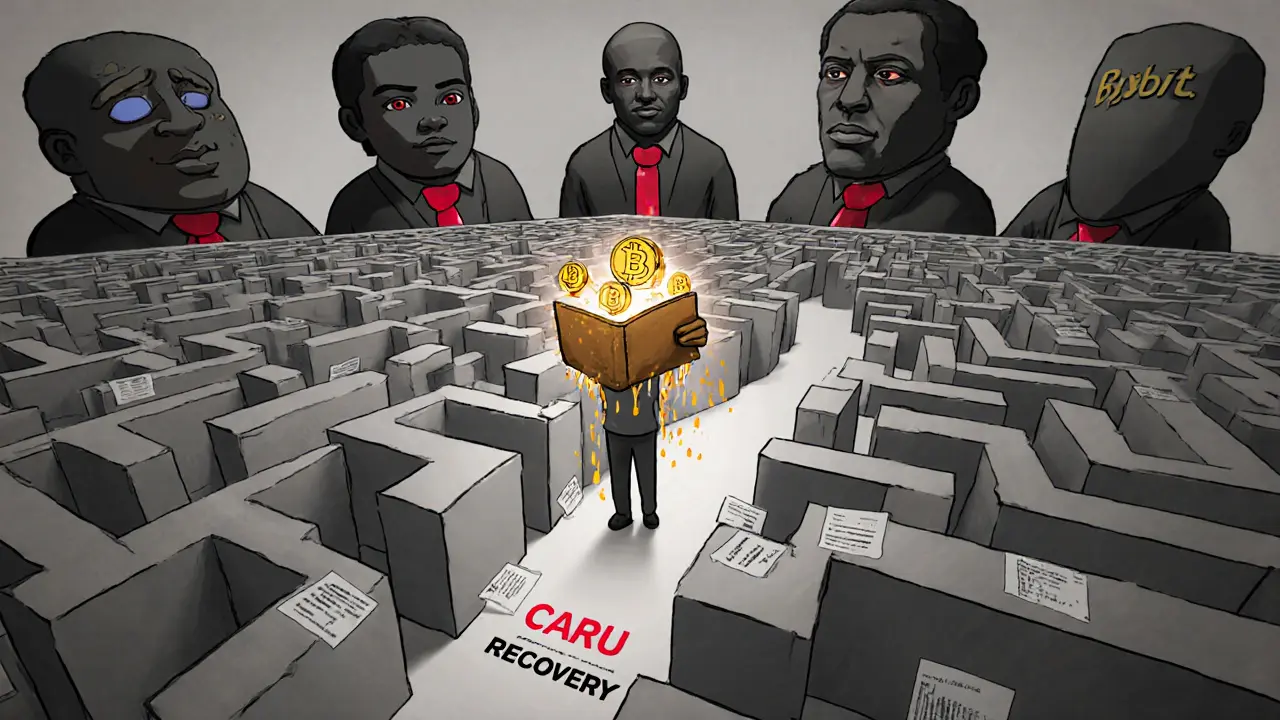
The Recovery Process: A Maze of Paperwork
The SEC set up the Crypto Asset Recovery Unit (CARU) to help users get their money back. Sounds good, right? Except the process was brutal.
To apply, you needed:
- A government-issued ID
- Complete transaction history from the frozen exchange
- Proof your funds weren’t from illegal activity
- Access to a government portal that didn’t always work
By July 2025, only 12% of affected users had completed the process. Why so low? Because 34% of applications were rejected for missing documents. Another 22% were flagged for deeper review-meaning their money might be tied to something shady, even if they didn’t know it.
And the timeline? On average, it took 47 days just to get a response. Coins.ph, one of the few licensed platforms helping with transfers, saw support tickets spike 300%. Resolution time jumped from 12 hours to 72 hours. People were stuck waiting, frustrated, and confused.
Was This the Right Move?
Regulators say yes. Former BSP Deputy Governor Nestor Espenilla Jr. called it “necessary to stop the Philippines from becoming a haven for crypto crime.” Chainalysis reported that $2.17 billion was stolen globally from crypto services in the first half of 2025. The Philippines had been a target-especially for money laundering using stablecoins.
But experts like Dr. Maria Santos from the University of the Philippines warned about collateral damage. “You can’t punish 100,000 honest users to catch 50 bad actors,” she said. “The system failed them by not communicating clearly.”
The truth? The freeze was a blunt tool. It didn’t distinguish between a scam platform and a sloppy one. It didn’t account for users who trusted their app because it had a Filipino interface, customer service in Tagalog, and ads on Facebook. It just froze everything.
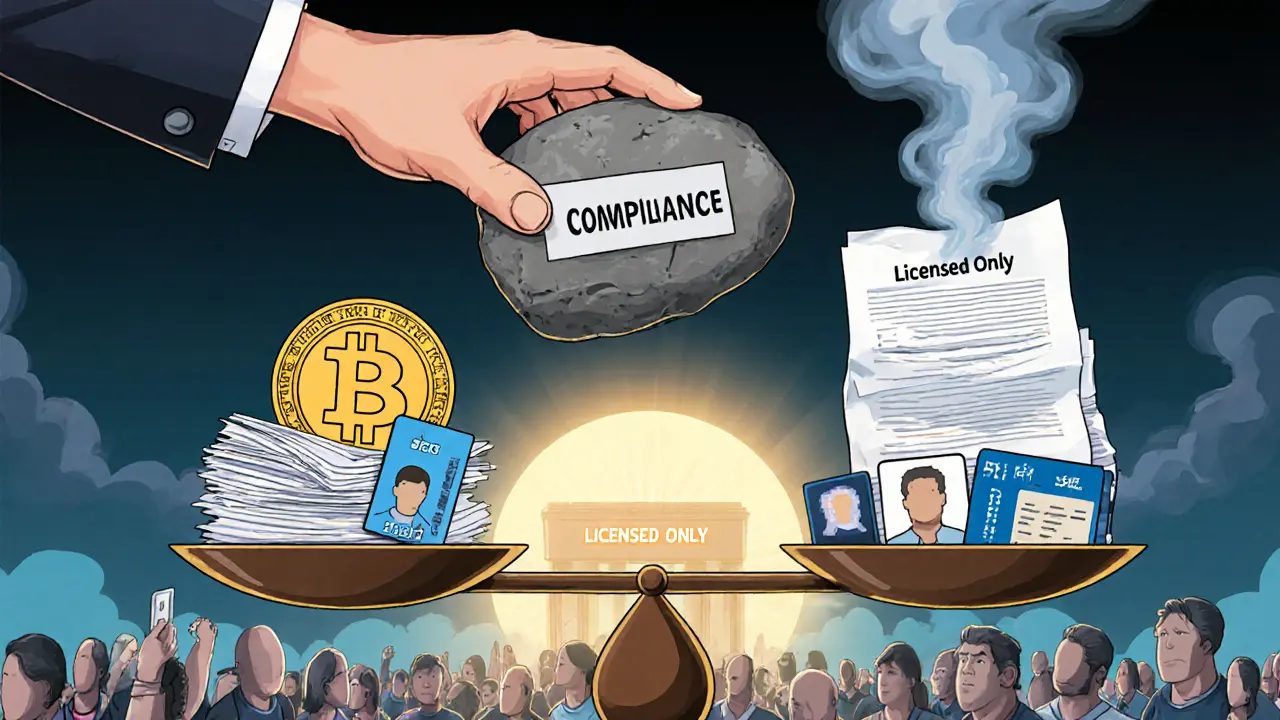
What’s Next for Crypto in the Philippines?
The freeze wasn’t the end-it was a turning point. The Bangko Sentral ng Pilipinas (BSP) had paused issuing crypto licenses since September 2022. That moratorium was set to end on September 1, 2025. The SEC’s crackdown was a signal: clean up before you apply.
On September 15, 2025, the SEC launched a Regulatory Sandbox. Ten platforms got temporary licenses to operate while the full rules were finalized. The first wave of official VASP license applications opened the same day. Coins.ph, PDAX, and other known players are now racing to get approved. New entrants are scrambling to meet compliance standards.
House Bill No. 4792, filed in March 2025, could create a National Council on Digital Assets and Tokenized Investments (NCDATI) to oversee everything. That’s a good sign. It means the government is trying to build a real system-not just react to chaos.
But the damage is done. Trust is broken. Many users have left crypto altogether. Others are waiting to see if their money ever comes back. The SEC has hinted that verified, legitimate funds might start being released on November 1, 2025. But legal battles from the blacklisted exchanges could delay that.
What This Means for You
If you’re using crypto in the Philippines today, here’s what you need to know:
- Only use platforms with a valid SEC license. Check the official list on the SEC website.
- Never trust an app just because it’s popular on TikTok or has a Filipino name.
- If you’re holding crypto on an unlicensed platform, you’re at risk. Move it now.
- If your funds are frozen, don’t give up. Apply for recovery through CARU-but be ready for paperwork.
- Ask your exchange: “Are you licensed by the SEC under MC No. 4-2025?” If they hesitate, walk away.
This isn’t just about regulation. It’s about survival. The Philippines has one of the highest crypto adoption rates in the world. But without clear rules and real protection, that growth will keep getting crushed by its own momentum.
The $150 million freeze was a wake-up call. The question now is: will the system fix itself-or will the next freeze be even bigger?
Why were $150 million in crypto assets frozen in the Philippines?
The Philippine SEC froze $150 million in crypto assets in early 2025 because they belonged to 20 unlicensed cryptocurrency exchanges operating illegally under new regulations (SEC MC No. 4-2025 and No. 5-2025). These platforms offered trading, custody, or exchange services without registering as Crypto-Asset Service Providers (CASP), violating investor protection laws. The freeze targeted platforms that failed to disclose asset details, separate customer funds, or meet basic compliance standards.
What percentage of the Philippine crypto market was frozen?
The $150 million frozen represented about 0.14% of the total Philippine crypto market, which stood at ₱6 trillion ($107 billion) as of early 2025. While this seems small, it affected tens of thousands of individual users, many of whom held small balances between $1,000 and $15,000. The majority of frozen assets were stablecoins (68%), with Bitcoin making up 22% and altcoins 10%.
Can I get my frozen crypto back?
Yes, but it’s difficult. The SEC’s Crypto Asset Recovery Unit (CARU) allows users to apply for fund recovery by submitting proof of identity, transaction history, and evidence that funds weren’t from illegal activity. As of July 2025, only 12% of applicants completed the process successfully. Applications are rejected for incomplete documentation (34%) or flagged for further investigation (22%). Processing takes an average of 47 days, and users must navigate government portals and provide blockchain transaction proofs.
Which crypto exchanges were affected by the freeze?
The SEC blacklisted 20 unlicensed exchanges, including well-known international platforms like Bitget and Bybit that had been serving Filipino users without proper registration. These platforms were not officially licensed under Philippine law, even if they had local marketing, customer support in Tagalog, or app store listings. The SEC did not release a full public list, but affected users reported issues primarily with platforms that were popular on social media and offered high yield on stablecoins.
Is crypto still legal in the Philippines?
Yes, crypto is still legal-but only if you use licensed platforms. The SEC now requires all Crypto-Asset Service Providers (CASP) to register and comply with strict rules on transparency, fund segregation, and user protection. The Bangko Sentral ng Pilipinas (BSP) lifted its three-year moratorium on VASP licenses on September 1, 2025, and began accepting applications. Only platforms approved by the SEC are considered legal. Using unlicensed platforms remains illegal and puts your funds at risk.
What should I do if I lost crypto in the freeze?
First, verify if your exchange was on the SEC’s blacklist. If yes, immediately apply for recovery through the Crypto Asset Recovery Unit (CARU) via the SEC’s official portal. Gather all transaction records, wallet addresses, and ID documents. Avoid third-party recovery services-they’re often scams. Join user groups on Reddit or Facebook to share tips, but never share private keys. If your application is denied, you can appeal, but legal options are limited. The best move now is to move your remaining crypto to a licensed platform like Coins.ph or PDAX.
